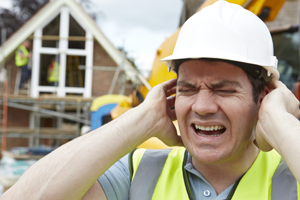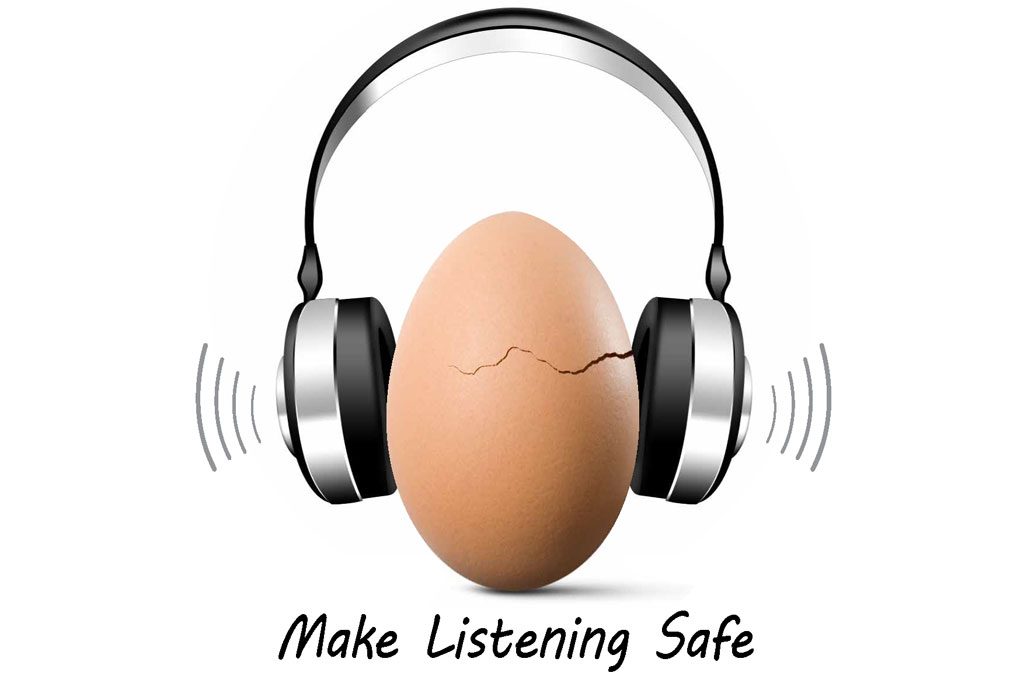Noise Induced Hearing Loss
What is noise induced hearing loss (NIHL)?
It is the sudden or gradual loss of hearing due to exposure to loud sounds. It can occur as a result of one exposure to excessively loud noise or can occur after prolonged exposure to loud noise (e.g. after years of damage to the hearing system caused by noise exposure or a shorter time frame).
How is the hearing loss experienced?
The hearing loss can range from a mild to severe form in either one ear or both ears and can be temporary or permanent. People with noise induced hearing loss often have difficulty hearing higher frequencies (higher pitched sounds). This can impact on how easily speech is understood. Some individuals with NIHL will find it difficult to follow conversations in noisy environments and some describe sounds as muffled. Other symptoms include tinnitus (ringing in the ears) or sensitivity to sound.
Who does noise induced hearing loss affect?
Anyone can be affected by noise induced hearing loss at any age. Those who are exposed to loud noises on a daily basis are at a higher risk of developing NIHL, e.g. woodworkers and musicians.
Research is showing that the prevalence of noise induced hearing loss is increasing worldwide and is likely due to the advent of personal listening devices.
What causes noise induced hearing loss?
To understand the cause it’s important to first understand how the hearing system works.

There are three major parts of the ear: the outer ear, middle ear and inner ear. Sound waves travel through the outer ear and cause the eardrum to vibrate. The ear drum (tympanic membrane) is connected to tiny bones (ossicles) in the middle ear. Therefore, when the eardrum vibrates due to sound waves striking it, the tiny bones start moving which causes parts of the liquid in the inner ear to move. These movements differ according to the loudness and pitch of the sound and are detected by tiny hair cells that stimulate the auditory nerve which carries this information to the brain. In the brain the information is processed so that we can recognise it as sound. In short, sound waves set parts of our hearing system into motion that eventually trigger electrical signals to be carried from the cochlear to the brain via the auditory nerve.
Noise that’s too loud can either immediately or eventually lead to damage to the hair cells within the inner ear that stimulate the auditory nerve, subsequently leading to hearing loss. In rare cases of extremely loud sounds the eardrum or ossicles (bones in the middle ear) can be damaged immediately causing hearing loss along with pain.
How is noise induced hearing loss diagnosed?
An audiologist will gather a comprehensive case history asking you questions about your hearing loss, e.g. when it began, whether it’s persistent or fluctuating, what sounds are difficult to hear etc. An otoscope will then be used which is an instrument that allows the audiologist to visualise the eardrum and the ear canal. A hearing test will be carried out. Usually the hearing test will consist of audiometry and possibly other tests depending on your individual circumstances. Audiometry involves listening to sounds of varying loudness levels and pitches through a set of headphones. The person being tested is required to respond to these sounds by pressing a button or raising a hand. Generally, a person with noise induced hearing loss will have a case history that indicates exposure to loud noise and the hearing test often reveals a more pronounced hearing loss in the high frequencies (high pitches).
In complex cases or cases of damage to the tympanic membrane or ossicles a referral to an ENT doctor will be required.
Can noise induced hearing loss be prevented?
Yes, it is one of the only types of hearing loss that can be prevented. Protective hearing devices like ear plugs or ear muffs should be worn during exposure to loud sounds (noises above 85 dB that can cause damage). These should be worn in noisy workplaces to limit prolonged exposure to dangerous noise levels. If you can’t reduce the loudness levels remove yourself from loud environments. Turn the volume down on portable listening devices and sound systems to a comfortable level.

How can noise induced hearing loss be treated?
There are a number of treatment options available for NIHL and the best option for you will depend on the nature of you hearing loss. Therefore, it’s important to get your hearing assessed by an audiologist if you are concerned about hearing loss.
Hearing aids, surgery, cochlear implants or tinnitus management options are all treatment options for NIHL.
Hearing aids amplify sounds in the environment and there are a numerous types of hearing aids available to suit different needs. For more information about the different types of hearing aids click here or contact Hearing Choices to speak to our audiologists.
Surgery may be necessary in cases of eardrum rupture or damage to the ossicles (bones within the middle ear).
Cochlear implants may be suitable in cases of profound bilateral deafness (profound deafness in both ears). Cochlear implants are inserted into the inner ear through a surgical process. They work by detecting sounds and stimulating the auditory nerve.
When tinnitus is experienced as a symptom of NIHL there are a number of options available to manage the tinnitus. These include: sound therapy, relaxation therapy, cognitive behavioural therapy (CBT), counselling, mindfulness meditation and tinnitus retraining therapy (TRT). For more information on tinnitus treatment click here.
